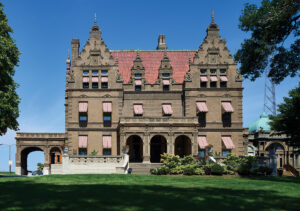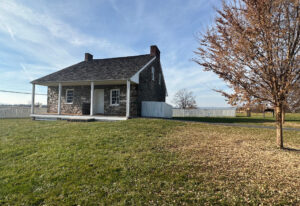ANCIENT TRACKS
Everyone has a bit of Britain he would like to keep a secret. But alas, secrets are hard to keep. Favourite places have a habitof being discovered, then revealed, then overwhelmed with visitors. This has happened with the Cotswolds in the past 20years–a ravishing area now difficult to disentangle from crowds: in summer it is submerged in a tide of what the Brits calltrippers. Yet all is not lost for those wishing to find precious, innocent pieces of untrammelled countryside.
ANCIENT TRACKS introduces readers to 17 virtually unknown rural roads in England, Scotland, and Wales. From theleaf-scattered paths of Offa’s Dyke to the stony mountain ways of the Thieves’ Road in the Highlands, these mysterious routesare rough and require stamina. Yet they offer infinite rewards to the adventurous. In this elegant book, author Des Hannigantakes readers down these age-old British trackways.
First marked out by herds of wild animals in the warm periods between the great ice ages, routes such as the Ridgeway werelater used by the earliest settlers. The soldiers of the Roman conquest made some and used others, as did refugees frombattles, ruffians, and rogues escaping the law. Later still, medieval drovers leading cattle, sheep, and geese to market wouldhave walked these country lanes. Up until the end of the 19th century they were still in use, but now these once-busy trackshave been replaced by modern connections that have laid an efficient and speedy, yet soulless gridiron over the country. Onlygypsies and romantic souls knew of the existence of the old roads and slowly some slipped back into nature.
To discover the tracks and to appreciate them to their fullest extent, some forethought is required. You will need to dresscarefully, considering wet and cold weather. Paths can be minimal, often stony, or muddy. You will need the correct footwear,a rain hat, maybe a stick. Detailed maps such as the large-scale Ordnance Survey series covering all the British Isles, areessential. In addition, the author suggests nearby circular paths or sidewalks, as well as support transport and accommodationtips.
Des Hannigan is an evocative writer and he expresses a deep feeling for the old highways he describes so well. Take thePilgrims’ Way, which wound its course from many points to converge on the cathedral of Canterbury and the revered tomb ofmartyred archbishop, Thomas Becket. To set the scene, Hannigan introduces the short piece of the walk he describes (18miles from Chartham to the cathedral) with a quotation from Chaucer’s Canterbury Tales and then depicts with infectiouspleasure the villages, fields and narrow, tree-shaded lanes of Kent.
The book itself details only fragments of the old roads, yet these glimpses are enticing. The photographs, by a master artist with the camera, Simon McBride, are particularly evocative, reminding you intensely of an almost vanished Britain. To follow theseways, even in inclement weather, is to discover a different land, unknown to all but a few Britons, seeing views often misty andmelancholy, yet always wondrous.
Ancient Tracks: Walking Through Historic Britain is distributed in the United States by Trafalgar Square, North Pomfret, VT 05053, tel: 802-457-1911. $24.95 paperback.
Michael Leech




